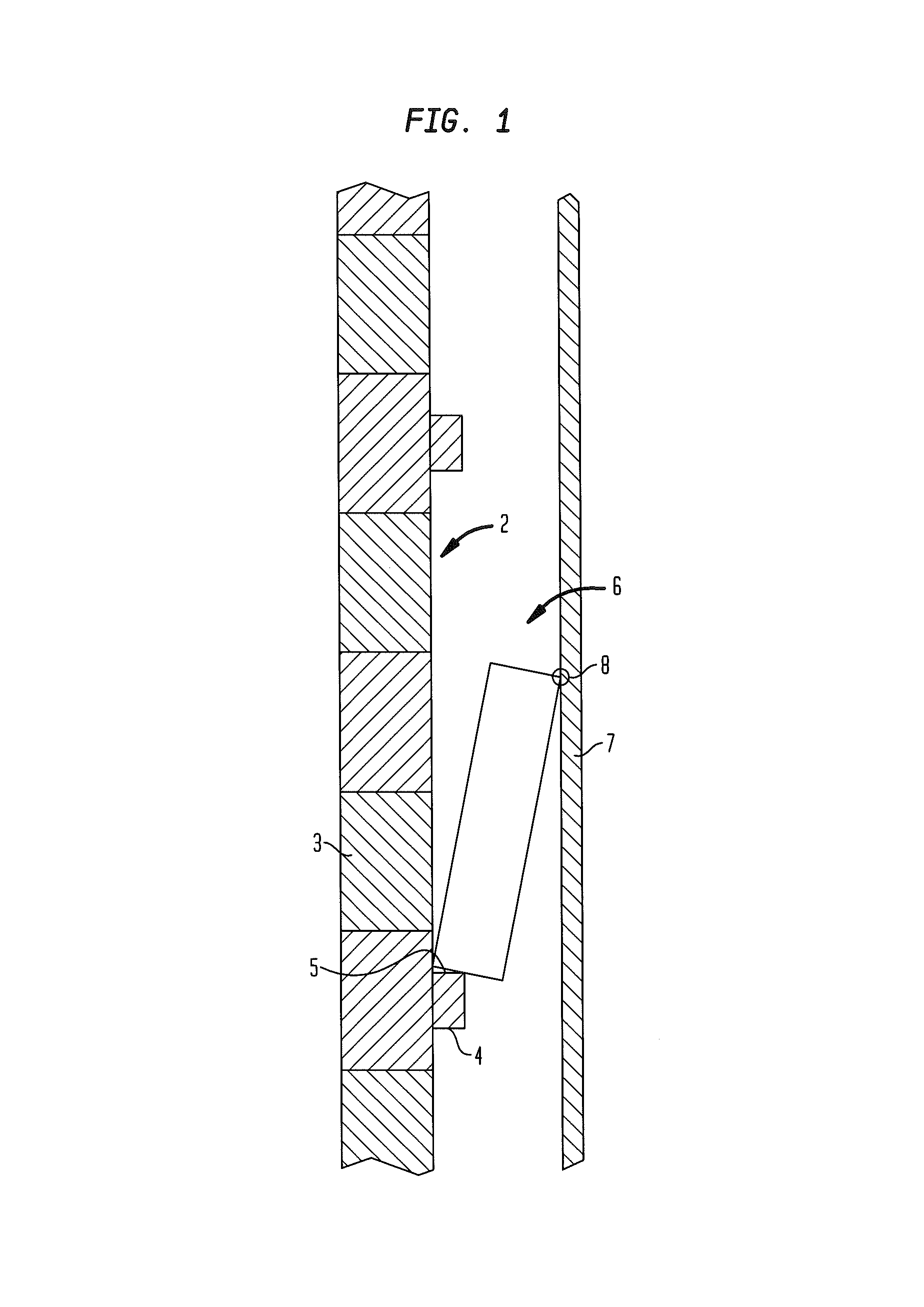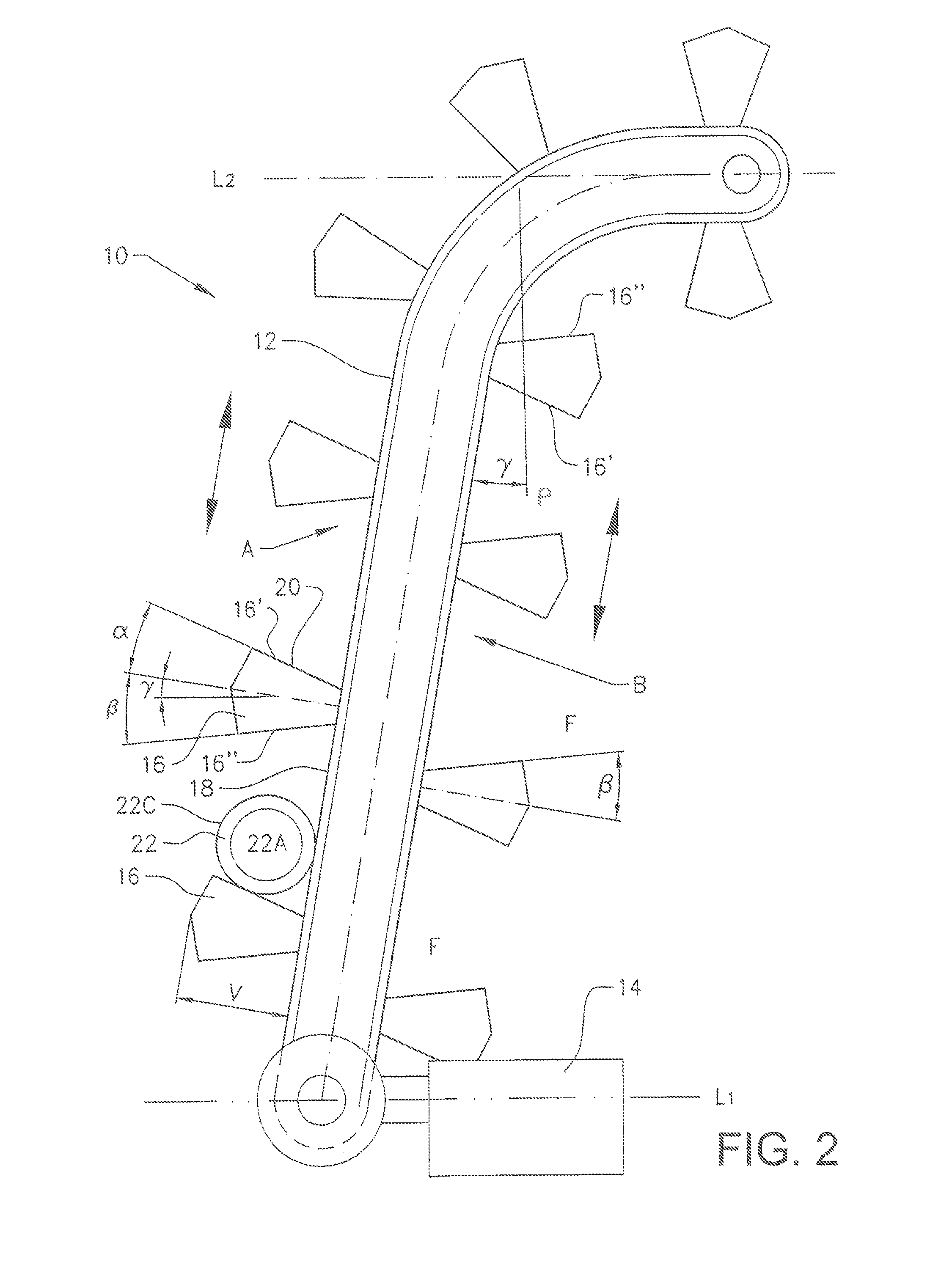Conveyor system
a conveying system and conveyor technology, applied in the direction of mechanical conveyors, conveyors, rotary conveyors, etc., can solve the problems of inability to guarantee the speed of conveying objects, the inability to keep the position of objects under control, and damage and wear of transported objects
- Summary
- Abstract
- Description
- Claims
- Application Information
AI Technical Summary
Benefits of technology
Problems solved by technology
Method used
Image
Examples
Embodiment Construction
[0045]In FIG. 2 an elevation transport section 10 forming part of a conveyor system for transporting cylindrical objects 22 is shown. The cylindrical object includes two opposite end faces 22A and an envelope surface 22C. The elevation transport section 10 is arranged to transport a cylindrical object from a first height level L1 to a second height level L2. In the embodiment shown in FIG. 2 the elevation transport section forms a transportation path which is inclined in relation to a vertical plane P at an angle γ. As shown in FIG. 2, the elevation transport section has a first side A with an inclination of less than 90° and a second side B having an inclination exceeding 90°. It is possible but not necessarily to use both sides of the elevation transport section for transportation of goods. One side of the elevation transport section may be used as a transport path while the other opposite side is used as a return path. The transport path may include portions which have an inclina...
PUM
 Login to View More
Login to View More Abstract
Description
Claims
Application Information
 Login to View More
Login to View More - R&D
- Intellectual Property
- Life Sciences
- Materials
- Tech Scout
- Unparalleled Data Quality
- Higher Quality Content
- 60% Fewer Hallucinations
Browse by: Latest US Patents, China's latest patents, Technical Efficacy Thesaurus, Application Domain, Technology Topic, Popular Technical Reports.
© 2025 PatSnap. All rights reserved.Legal|Privacy policy|Modern Slavery Act Transparency Statement|Sitemap|About US| Contact US: help@patsnap.com



